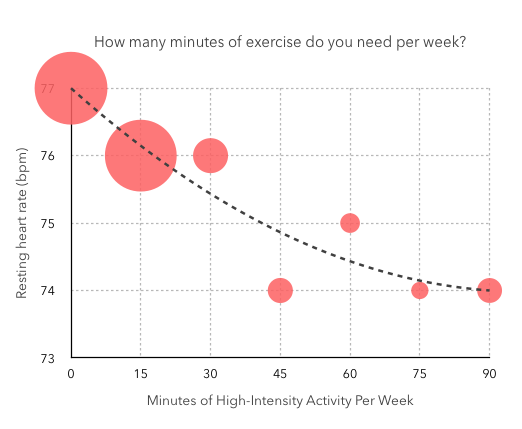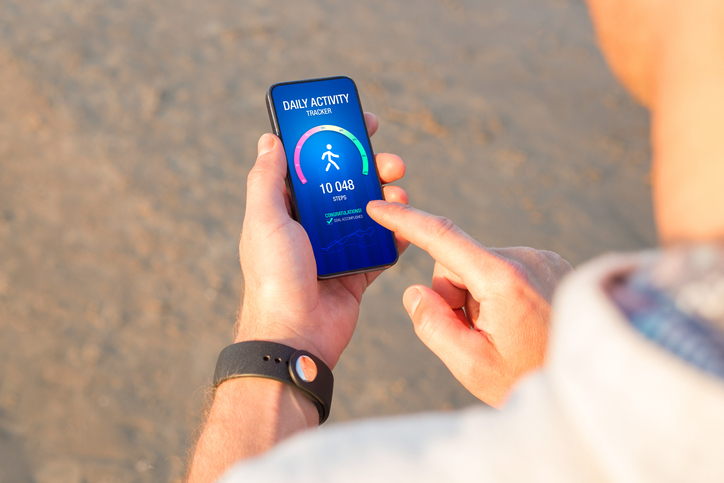We’re often told to walk 10,000 steps per day, but what is the science behind that? Why not 20,000? 5,000? Why step count, and not the type of exercise, intensity, or total minutes?
With the advent of Apple Watch and Android Wear, millions of people now have heart rate sensors strapped to their wrist. To answer the questions above, we analyzed 458,000,000 distinct data points from Cardiogram for Apple Watch.
Origin of 10,000 Steps

The idea of 10,000 steps originated as a marketing slogan during the 1964 Tokyo Olympics, when an athletic company released a pedometer named manpo-kei, which means “10,000 step meter”. Unfortunately, the clinical evidence is scant: while there is some work correlating step count with outcomes like BMI and blood pressure, and a set of official activity guidelines, “no study to date has systematically evaluated dose-response effects of different steps/day goals.“
Resting heart rate: a metric of cardiovascular and overall health
Your heart rate while at rest — not moving, but not necessarily sleeping — has been shown to be a strong measure of overall health. A Chinese study showed the risk of dying of any illness went down by 9% for every 10 bpm decrease in resting heart rate. If your resting heart rate is below <75bpm, your chance of sudden cardiac death is halved. Even beyond cardiovascular health, a resting heart rate of <70bpm reduces your chance of cancer.
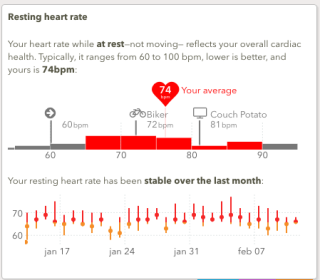
The good news is resting heart rate is highly modifiable. Exercise strengthens the heart muscle, so that it can pump the same volume of blood with fewer strokes. Marathon runners sometimes achieve resting heart rates in the 40’s.
According to the Mayo clinic, a normal resting heart rate is between 60 and 100 beats per minute. Among Apple Watch users with Cardiogram installed, the median is 76 bpm. About eighty percent of us are between 67 and 88 bpm.
Do you really need 10,000 steps per day?
These days, we’re all carrying pedometers: iPhone counts your steps using HealthKit; Android devices use Google Fit.
So what happens if we plot average step count per day from iPhone vs your resting heart rate from Apple Watch? It looks like this, with size of bubble proportional to number of distinct people in each group:
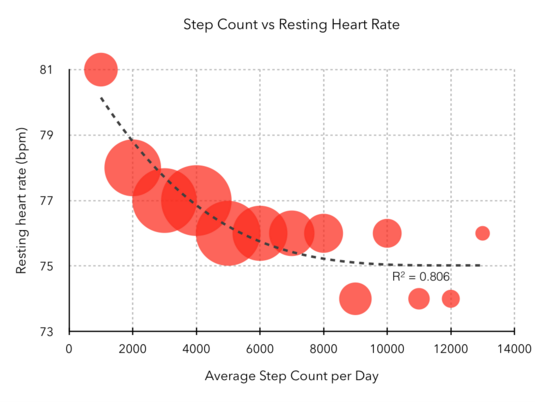
In cardiovascular terms, the drop in heart rate from 1000 steps/day to 2000 steps/day is significant: a full 3 bpm decrease. And as step count increases, resting heart rate steadily drops — until you reach about 5000 steps per day. After that — 6000, 7000, even up to 10,000 steps — the curve flattens.
How about type and intensity of exercise?
What if it’s not step count that matters, but the intensity of exercise? To quantify this, we broke the chart above into three groups of people: high intensity gym rats who get their heart rate above 150 bpm for at least an hour each week, medium intensity people who get their heart rate above 130 bpm for an hour a week (say, power walkers), and low intensity (couch potatoes, the rest of us).
When broken down by exercise intensity, step count becomes much less:
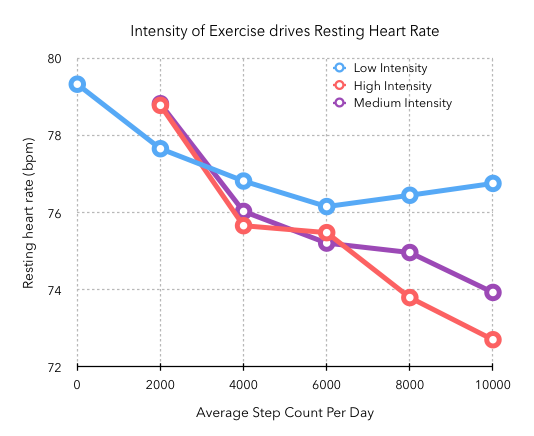
Even if you get 10,000 steps per day, if your heart rate doesn’t go over 130 bpm, there’s not much impact on your resting heart rate. In contrast, even 4000 steps / day of high intensity exercise delivers a benefit: about a 4 bpm absolute drop in resting bpm, which doubles to 8 bpm at 10,000 steps / day.
The chart above was for an hour of exercise per week. But how much exercise do you need to get the best “bang for the buck”? Surprisingly little:
